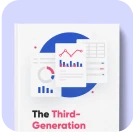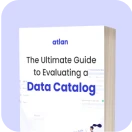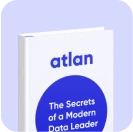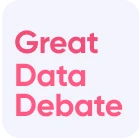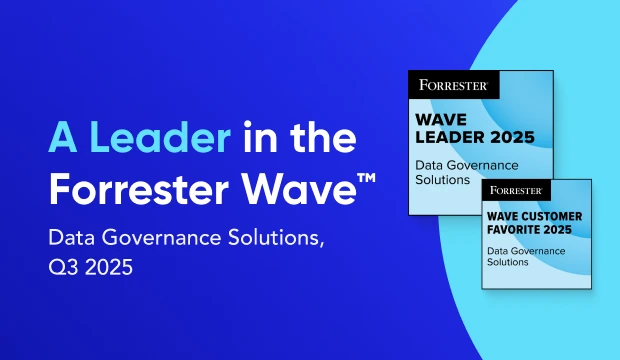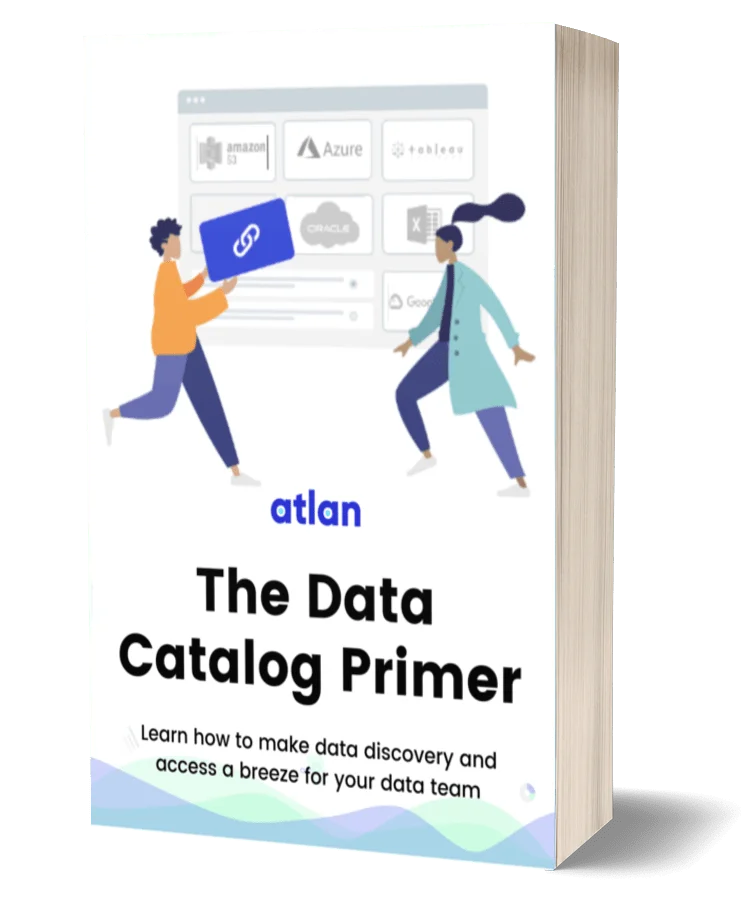Data Governance Process: Why Your Business Can't Succeed Without It
Share this article
A data governance process describes how an organization defines the policies, procedures, and systems for regulating the integrity and security of its data. It lays out how people, processes, and tools combine to ensure stakeholders can access correct, up-to-date data in a compliant fashion.
See How Atlan Simplifies Data Governance – Start Product Tour
Data governance is critical to business success. So why, according to Accenture, do 81% of companies still not have a data strategy?
Building a data governance process takes time, commitment, and organizational buy-in. In this article, we’ll define what a data governance process is and how to craft one from the ground up.
Table of contents #
- What is a data governance process?
- Organizational components
- Challenges in adopting
- Defining a data governance process
- Related reads
What is a data governance process? #
A data governance process describes how an organization defines the policies, procedures, and systems for regulating the integrity and security of its data. It lays out how people, processes, and tools combine to ensure stakeholders can access correct, up-to-date data in a compliant fashion.
People, processes, and tools are the three pillars of any data governance process.
This article will hit on all three pillars, as each is indispensable. A tool isn’t any good without a process and buy-in from the people who are supposed to use it. But similarly, a process won’t make much difference if an organization doesn’t provide the tooling necessary to make it intuitive and easy to use.
A good data governance process will foster a centralized approach to governance while enabling bottom-up, decentralized ownership by individual teams and business units.
Organizational components of the data governance process #
Each organization will define its own organizational components in the data governance process. One possible model is laid out by McKinsey, which specifies three core organizational components:
- A data management office
- Domain owners
- A data council
Data management office (DMO) #
Most data governance programs that aim to drive enterprise-wide change require a formal and structured approach. The DMO defines policies, oversees training, and ensures cross-organizational adoption. At a minimum, the DMO usually consists of leaders who can navigate organizational politics, coupled with Data Architects and stakeholder representatives.
Domain owners #
The teams and individuals who own the data for a specific business. The domain owners own and implement the program in their day-to-day work. Their approval is essential to the successful adoption of any data governance process.
Data council #
A data council brings domain leaders - the people and teams who own the data - together with DMO leadership to review processes and remove roadblocks. Some companies might call this a steering committee.
Challenges in adopting a data governance process #
It’s one thing to define a data governance process. It’s another to get people to follow it. Several factors can hinder the successful adoption of a process:
Data silos and tribal knowledge. The rapid pace of technology can foster the creation of silos and team-specific knowledge. Many teams may be reluctant to move on from this because what they already have “works” for them.
Process deviation. Teams may use their own tools and technologies outside of the standard defined processes. This leads to “shadow IT”, where teams are using software not supported by your company’s core Information Technology teams.
Slow-moving processes. Teams are more likely to “do their own thing” if the processes required to ship a new data-based project are laborious and time-consuming.
A successful data governance process can address every one of these challenges. However, that requires involving the appropriate stakeholders from the very beginning.
Defining a data governance process #
Let’s look at the components of defining a successful data governance process:
- Create a data governance framework
- Create data governance teams
- Assign roles and responsibilities
- Create a data governance policy
- Define data standards
- Implement data governance policies and data standards
- Establish data quality metrics
- Implement data governance policies
Create a data governance framework #
A data governance framework defines your company’s structure for data governance and provides the foundation of any data governance program. It serves as your organization’s blueprint for enforcing governance.
There are a number of pre-existing models you can use as models for your own data governance framework. Some focus more on organizational structure, whereas others are more data-management-focused. Your organization should start with the model that seems the best fit for your culture and evolve it over time.
Create data governance teams #
Form teams responsible for developing and implementing data governance policies and procedures.
These teams are separate from the company’s core governance organizations, such as the DMO or data council. They’re the teams that own specific data domains. Each team is responsible for the integrity, timeliness, and security of the data within its domain.
Assign roles and responsibilities #
Data governance has gained a bad rap for over-focusing on security controls and regulatory compliance over sharing and collaboration. That’s why it’s critical to have clearly-defined roles for the members of your data governance teams. Defining roles ensures that everyone’s voices and needs are represented.
The key roles of data governance teams should include:
- Data admin: A combination of a business and technical user who owns ultimate responsibility for implementing data governance processes. Owns the underlying data model and handles all escalations.
- Data steward: A business user (usually a senior team member) who works with both business users and IT to standardize data definitions, models, and access policies.
- Data custodian. A technical user focused on the storage, security, and movement of data. This is typically a senior engineer familiar with using the modern data stack.
- Data user. Business users - marketers, salespeople, managers, executives, researchers, etc. - who use modern data stack tools to mine insights from data to drive business decisions.
Create a data governance policy #
A data governance policy is a document that defines each data management team’s roles, responsibilities, and obligations throughout the organization.
A good data governance policy both outlines a vision as well as sets forth a series of do’s and don’t’s for every team that handles data within the company. It should specify the following at a minimum:
- Data governance structure policy
- Data access policy
- Data usage policy
- Data integrity and integration policy
Define data standards #
A good data governance process creates policies that keep data healthy. This requires establishing rules that standardize data representation across the company. Common standardization rules include:
- Defining common formats for data such as dates
- Conforming to international standards for data representation
- Cleaning data to convert it to common formats
- Using z-scores instead of raw data
As part of your data governance process, define your data and where it’s coming from. Set out standards for data formatting, and create tools and processes to enable transforming data into the standard format.
Implement data governance policies and data standards #
Next, it’s time to put data governance policies into practice. This involves embedding them deeply in each team’s daily processes. A few of the best practices you should foster include:
- Embedding data collaboration in each team’s daily workflows
- Employing automation to enforce governance policies (e.g., detecting and redacting Personally Identifiable Information, or PII)
- Using DataOps to rapidly deploy new data projects in an agile, collaborative, and high-velocity manner
- Invest in intuitive tools that are easy to use, interoperate smoothly, and foster collaboration
Monitor and measure data quality #
Automation is key to monitoring and measuring quality in the modern data stack. In terms of data quality and standards, automation can enforce data standards, detect variances, and generate reports and alerts when the tooling uncovers data quality issues.
There are a variety of tools for detecting and improving data quality. For example, Atlan’s data catalog implements a series of automated checks that enforce data constraints and detect data anomalies.
With automation solutions in place, each team can continue to monitor and improve the quality of its data over time.
Evaluate and improve the data governance process #
With people, processes, and technology aligned, you can gather information on the performance of your data governance process and make continuous improvements.
Feedback can come from automated sources - including statistics on data quality, volume, query performance, etc. - and from other metrics such as data project velocity. You should also gather feedback from your data governance teams on toolset performance and usability.
Conclusion #
You can’t have a data governance process without buy-in from your people and the right technology. With organizational support and a modern data stack, you can define an iterative, incremental data governance process that ensures you have the data you need to support your business.
Data governance process: Related reads #
- Data Governance in Action: Community-Centered and Personalized
- Data Governance Framework — Examples, Templates, Standards, Best practices & How to Create One?
- Data Governance Tools: Importance, Key Capabilities, Trends, and Deployment Options
- Data Governance Tools Comparison: How to Select the Best
- Data Governance Tools Cost: What’s The Actual Price?
- Data Governance Process: Why Your Business Can’t Succeed Without It
- Data Governance and Compliance: Act of Checks & Balances
- Data Governance vs Data Compliance: Nah, They Aren’t The Same!
- Data Compliance Management: Concept, Components, Getting Started
- Data Governance for AI: Challenges & Best Practices
- A Guide to Gartner Data Governance Research: Market Guides, Hype Cycles, and Peer Reviews
- Gartner Data Governance Maturity Model: What It Is, How It Works
- Data Governance Roles and Responsibilities: A Round-Up
- Data Governance in Banking: Benefits, Implementation, Challenges, and Best Practices
- Data Governance Maturity Model: A Roadmap to Optimizing Your Data Initiatives and Driving Business Value
- Open Source Data Governance - 7 Best Tools to Consider in 2024
- Federated Data Governance: Principles, Benefits, Setup
- Data Governance Committee 101: When Do You Need One?
- Data Governance for Healthcare: Challenges, Benefits, Core Capabilities, and Implementation
- Data Governance in Hospitality: Challenges, Benefits, Core Capabilities, and Implementation
- 10 Steps to Achieve HIPAA Compliance With Data Governance
- Snowflake Data Governance — Features, Frameworks & Best practices
- Data Governance Policy: Examples, Templates & How to Write One
- 7 Best Practices for Data Governance to Follow in 2024
- Benefits of Data Governance: 4 Ways It Helps Build Great Data Teams
- Key Objectives of Data Governance: How Should You Think About Them?
- The 3 Principles of Data Governance: Pillars of a Modern Data Culture
Share this article


